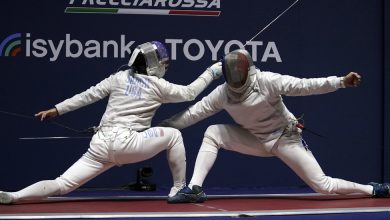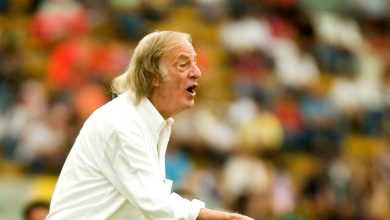PGA Tour Payouts Soar as Saudi-Backed LIV Golf Rains Down Riches

SCOTTSDALE, Ariz. — After all of these years — and given the ritualized rowdiness, it is impossible to say for certain — the money at the Phoenix Open might be flowing as freely as the drinks and the jeers around the 16th hole.
A decade ago, PGA Tour players came to the desert to jockey for a share of $6.2 million in prize money. Last year, they competed for a cut of $8.2 million. This time around? The pool is $20 million.
In a decidedly turbulent era of men’s golf, even the tournament that calls itself “The People’s Open” is a front in the sport’s transcontinental, multibillion-dollar arms race. Classified by the PGA Tour as a “designated event” for this year, the Phoenix Open is one of 10 tournaments on the circuit’s regular-season calendar that have promised purses of at least $15 million; all but one have offered $20 million or more.
A central question for the PGA Tour is whether those payouts, and promises of more like them in the future, will help create enough of a counterweight to the riches of LIV Golf, the circuit that has the financial backing of Saudi Arabia’s sovereign wealth fund and, after only a season of play, a track record of eye-popping contracts and guaranteed prize money.
Asked in an interview at T.P.C. Scottsdale, the site of this week’s tournament, whether he believed the tour’s increased purses had helped curb an exodus of players to LIV, Commissioner Jay Monahan noted that many tour members were involved in designing the overhaul. Under the revamped system, the tour’s most elite and popular players are usually required to play the biggest events on the regular-season calendar, ensuring sterling fields and, presumably, far stiffer competition than a particular tournament might draw otherwise.
“The players were so engaged and involved in the changes that we were making,” Monahan said. “Their involvement, their belief in this model and this model preparing them to achieve at the highest level, that’s what they’re committed to.”
But he also raised his hands and shrugged because at a time when LIV golfers have earned far more at shorter tournaments with no cuts, he can have only so much certainty.
Dustin Johnson, who recorded about $75 million in tour earnings over 15 PGA Tour seasons, collected more than $35 million at LIV competitions last year. At one event last year, Charl Schwartzel earned $4.75 million because of his individual and team results. Adjusted for inflation, that lone payday was still a seven-figure advantage over his best tour season.
The winner in Arizona on Sunday will earn $3.6 million and tie a tour record that will be eclipsed four weeks later, when the Players Championship’s victor will collect $4.5 million. (As usual, the Tour Championship, which will be held at the end of the season in Atlanta, will award far more, but the money there is considered part of a bonus pool, not a standard tournament purse.)
The tour’s pivot toward greater payouts, executives insisted, was in the making long before LIV overtly upended the golf marketplace, with the bigger purses traceable to a new television-rights deal announced in early 2020. They acknowledge, though, that LIV’s emergence prompted them to accelerate and adjust some of their plans, which are being helped along by tour reserves and increased payments from tournament sponsors.
The tour, like all professional sports organizations, relies on a gumbo of moneymaking ventures, including television contracts, sponsorship deals and licensing arrangements, which are often becoming much more lucrative. But the tour’s most stalwart supporters, such as Tiger Woods, concede that it will struggle to keep pace with LIV Golf as long as wealth-fund leaders in Riyadh sustain their investment in the new circuit.
“We’re running a business here, and the money that our players are playing for are monies that we’re generating,” Monahan said.
“You have to operate prudently in the short- and long-term,” he added. “But there are ways to grow within each year, to create more opportunity, and that’s what we’re going to do.”
The heightened purses, including one next week at the Genesis Invitational in California, are among the less-disputed strategies the tour has embraced in its quest to preserve its power. Others are entangled in an antitrust lawsuit that will not be tried until at least next year, but LIV has acknowledged that some of the tour’s tactics are having significant effects, even as it has questioned their propriety or legality.
In a court filing on Monday, when LIV renewed its objections to the PGA Tour’s indefinite suspensions of players who defected, lawyers for the Saudi-backed league wrote that the tour’s “anticompetitive conduct” had “damaged LIV’s brand, driven up its costs by hundreds of millions of dollars and driven down revenues to virtually zero.”
Tour officials are expected to announce future plans for the high-roller events in the coming weeks, but a principal subject of internal debate has been whether the elevated status should rotate among tournaments. In addition to the tournament in Arizona, where the Thursday morning start was delayed because of frost (yes, really), this year’s designated events include the RBC Heritage at Hilton Head Island, S.C.; the Travelers Championship in Cromwell, Conn.; and the Wells Fargo Championship in Charlotte, N.C.
Tour officials, though, have made no public commitments that those events will keep their lofty status beyond 2023, and some players have suggested that they want to see an array of tournaments hosting the sport’s headliners.
“What I do hope is that some other tournaments that want to put up the resources to become elevated events might get the chance,” Jon Rahm said this week, despite his standing as one of the Phoenix Open’s pre-eminent cheerleaders. “That would be epic. I would love to see this rotating, not always being the same ones every year.”
Some players have also worried that tournaments regularly left out of any system, and potentially deprived of many tour stars, will struggle to draw the crowds and sponsorships that make them possible. And there is some anxiety that the PGA Tour is effectively becoming a tale of two circuits — one consistently loaded with A-list players and one routinely populated with everyone else — that periodically overlap.
Players said they would approach the elevated tournaments like any other. Rahm, who won the first designated event last month in Hawaii and entered this week’s tournament at No. 3 in the Official World Golf Ranking, suggested “nothing” had changed in his preparations.
“I want to perform well in every single tournament I go to,” he said, “no matter what it is.”
It is, after all, becoming a much bigger business — especially during Super Bowl week in Arizona, where, as Patrick Cantlay put it, it is “a party for everyone except us.”




